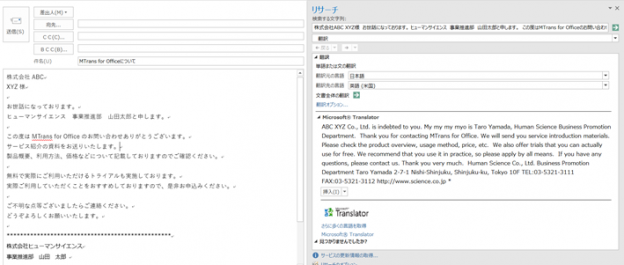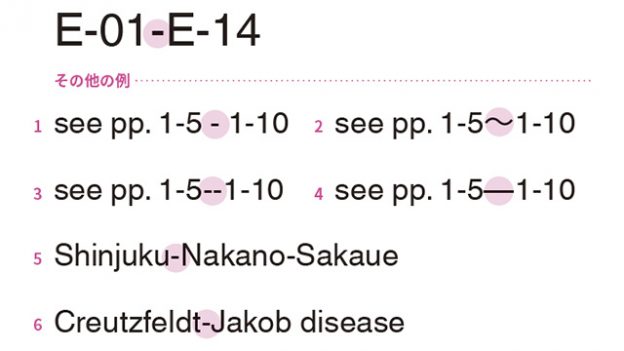
Among the various uses of participle constructions, the one that is commonly used in books and articles is the resultative participle construction (SVO + present participle...).
First, let's take a look at some common examples of "SVO + present participle" sentences.
Expenses were higher than we had anticipated, leading to a sizable loss.
(The cost ended up being higher than expected, resulting in significant losses.)
Vehicle crashes into building, causing over 3 million yen in damage.
(A vehicle collided with a building, causing over 3 million yen in damages.)
A good user interface provides a user-friendly experience, allowing the user to interact with the software in a natural and intuitive way.
(With an excellent user interface, it becomes easier to use and users can operate the software naturally and intuitively.)
In translation of IT and FA fields, there are cases where participle constructions like this can be effectively utilized to express results. However, if used too much, it can result in translations that are difficult for users to read, so caution is necessary.
Let's take a look at an example sentence.
- Table of Contents
1. Usage of unnecessary participle phrases①
- ・Original text: When there is too much clearance, the blank becomes dish-shaped and can create long string-like loops around the edge.
- ・Translation (before correction): <font id="2">If the clearance is excessive, the surface will become concave, causing long, stringy burrs all around the edge.
- ・Translation (Revised): <font id="2">Excessive clearance will cause the blank to warp and create long, stringy burrs along the edges.
The original sentence is not grammatically or structurally incorrect, but the revised "A + conjunction (and) + B" structure is simpler and easier for users to read than the participle construction that expresses the result.
(*Changing the passive voice "is dished" to "will dish" also contributes to readability.)
2. Usage of Excessive Participle Constructions ②
- ・Original text: With this assembly method, it is possible to semi-automate or fully automate the assembly process and significantly reduce the assembly cost per unit.
- ・Translation (before correction): <font id="2">A semi or fully automatic operation is possible with this assembly, allowing assembly cost per unit to be substantially reduced.
- ・Translation (Revised): <font id="2">This type of assembly is suitable for semi or fully automatic operation, resulting in a significant decrease in per unit assembly cost.
The original sentence here is not grammatically or structurally incorrect, but using the preposition "with" in the revised version makes it simpler and easier for users to read.
Next, let's take a look at an example of separating the "SVO + present participle" structure into two sentences to make it easier to read.
3. Usage of Excessive Participle Constructions ③
- ・Original text: When the servo motor and the machine are connected by gears, the position detection is performed by the rotation of the feed screw, resulting in higher positioning accuracy than the semi-closed loop method.
- ・Translated text (before correction): When the servo motor and machine are connected by a gear, the position is detected from the rotation of the feed screw<font id="2">, resulting in more precise positioning than the semi-closed loop method.
- ・Translated Text (Revised): When the servo motor and machine are connected by a gear, the position is detected from the rotation of the feed screw<font id="2">. This results in more precise positioning than the semi-closed loop method.
Since the original text is one sentence, the translation before correction is also one sentence, but by dividing it into two sentences like after correction, it becomes a more readable sentence for the user.
4. Common Mistakes in Expressions within Tables Example ④
- ・Original text: Files and folders can have detailed access permissions, which reduces the risk of information leakage even if there is an accidental email sending.
- ・Translated text (before correction): Detailed access permission can be set for files and folders<font id="2">, thereby reducing the risk of information leaks even if an email is sent to the incorrect person.
- ・Translated text (after correction): Detailed access permission can be set for files and folders<font id="2">. This reduces the risk of information leaks even if an email is sent to the incorrect person.
We have determined that, similar to Example 3, it is easier to read when the chapter is divided into two parts.
In such cases, in addition to using participial phrases, we sometimes see sentences connected using methods such as ⒶⒷ. However, we recommend utilizing simpler grammar and structure, or dividing the sentences whenever possible.
Ⓐ Use of "preposition + relative pronoun" (difficult to read)
Detailed access permission can be set for files and folders, by which the risk of information leaks is reduced even if an email is sent to the incorrect person.
Ⓑ "Use of subordinate clause + main clause" structure (difficult to read)
Because detailed access permission can be set for files and folders, the risk of information leaks is reduced even if an email is sent to the incorrect person.
Personally, I believe that among all the grammatical rules in English, the participle construction is the most important. However, during translation reviews, there are often cases where the correctly used participle construction is corrected and changed to a different grammar or structure. This is because translations such as FA and IT strictly adhere to the elements of technical writing and always need to be conscious of "stylish and advanced grammar or structure
Author Information

-
Andy ParkMultilingual Translation Group
Japanese-English Translation Reviewer- ・In my previous job, I worked as an IT engineer for about 4 years, and then I worked as an English conversation instructor for 8 years, where I was involved in developing educational programs and training instructors.
- ・Translation experience of 11 years, specializing in IT and business fields.
- ・Currently engaged in translation work and translation quality management, primarily focusing on FA-related products such as product manuals, help documents, and operation manuals.
- - Responsible for evaluating and verifying the translation quality of machine translation engines.
Related Blogs
























